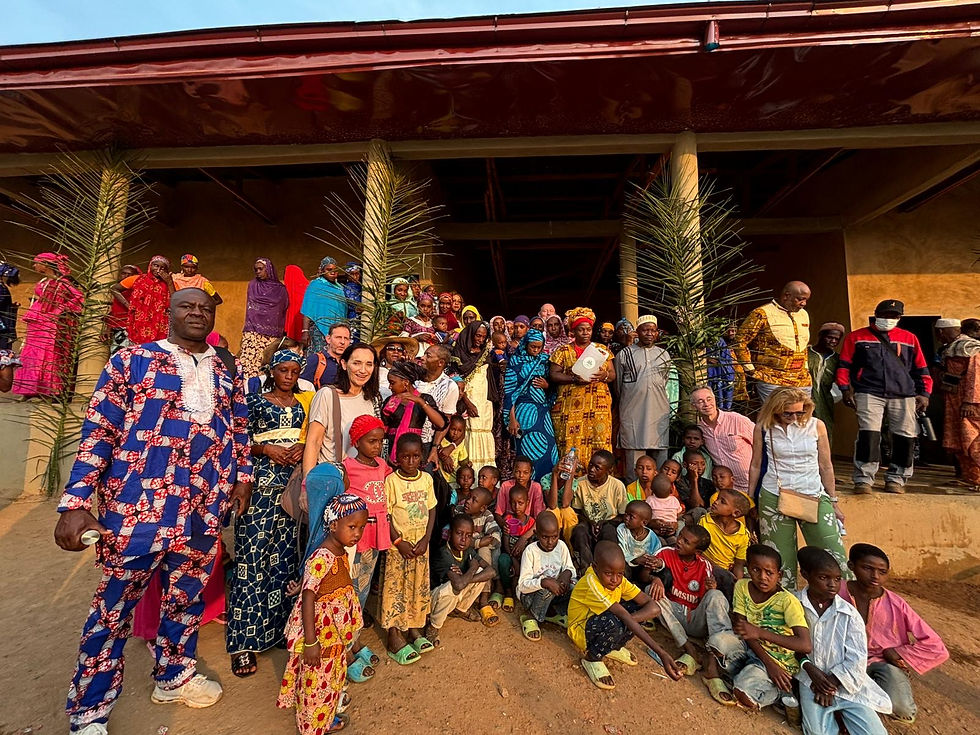Harnessing the Power of the Atmosphere: Water from Air Technology for Sustainable Water Solutions in Africa
- Aqua Vera
- 22 janv. 2024
- 2 min de lecture
Dernière mise à jour : 25 janv. 2024
In many parts of Africa, access to clean drinking water remains a critical challenge, with millions of people relying on contaminated sources that pose serious health risks. Addressing this pressing issue requires innovative solutions that can provide sustainable access to safe and reliable drinking water. Among the promising approaches emerging is the technology of extracting water from the air, also known as atmospheric water harvesting.
How It Works: Extracting Water from the Atmosphere
Water from air technology utilizes a process called condensation to capture water vapor from the atmosphere. This process involves capturing the air from the surrounding environment, cooling it below its dew point, and condensing the water vapor into a liquid form.

Benefits of Water from Air Technology for Africa
Water from air technology offers several potential benefits for addressing water scarcity in Africa:
Versatility: The technology can be deployed in various locations, including remote areas with limited or no access to existing water sources.
Sustainability: Water from air systems can operate independently of traditional water infrastructure, reducing reliance on often-inaccessible water sources and infrastructure.
Scalability: The technology can be scaled up to meet the needs of communities of various sizes, from small villages to densely populated urban areas.
Environmentally friendly: Some water from air systems use renewable energy sources, further reducing their environmental impact.
Potential Applications of Water from Air Technology in Africa
Water from air technology can be applied in various ways to address water scarcity in Africa:
Providing domestic water: The technology can be used to supply clean drinking water to homes and communities.
Supplementing irrigation systems: Water from air can be used to supplement existing irrigation systems, increasing agricultural productivity.
Supporting emergency relief efforts: The technology can be deployed in disaster areas to provide immediate access to clean water.
Challenges and Considerations
While water from air technology holds promise for addressing water scarcity in Africa, there are also some challenges and considerations to address:
Energy efficiency: The energy consumption of water from air systems can vary depending on the technology used and the ambient humidity levels.
Cost effectiveness: The cost of water from air systems may need to be further reduced to make them more affordable for widespread adoption.
Water quality: The water extracted from the air may require treatment to remove contaminants and meet drinking water standards.
Community engagement: Successful implementation of water from air systems requires collaboration with local communities to address their specific needs and preferences.
Collaboration and Innovation: A Path to Sustainable Water Solutions
Addressing the water crisis in Africa requires a multifaceted approach that combines technology, infrastructure development, and community engagement. Water from air technology can play a significant role in this effort, offering a sustainable and scalable solution to provide communities with access to clean drinking water.
By investing in research and development, promoting partnerships between technology providers and communities, and addressing the challenges related to energy efficiency and cost-effectiveness, we can unlock the potential of water from air technology to improve the lives of millions in Africa.
More information on Aquavera.org




Commentaires